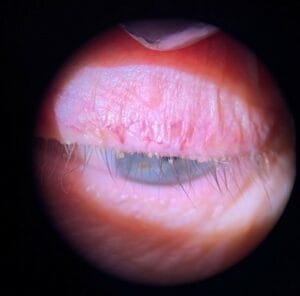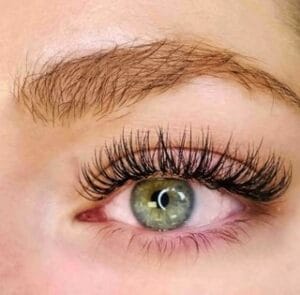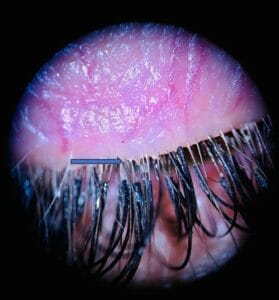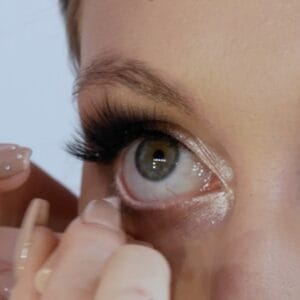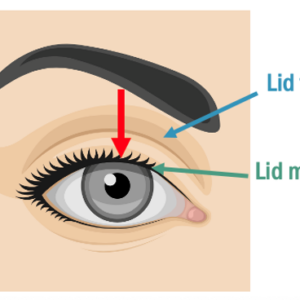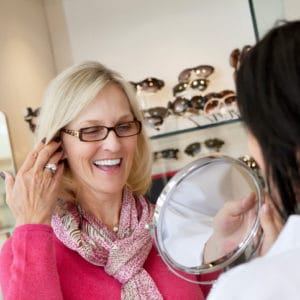September 1, 2023
The attention paid to lash appearance these days has eclipsed anything I’ve seen historically in our aesthetic space. Voluminous lashes are portrayed everywhere: in the media, movies, and even on the Disney princesses. The “doe-eyed” eyelash fluttery look has been around for many decades and isn’t going away.
There are lash enhancers, serums, boosts, extensions, fakes, falsies, mascaras, tints, dyes, curlers, and all manner of ways to enhance the eyelash. Normal healthy eyelashes have a life cycle consisting of three phases: the growth phase (anagen), the degradation phase (catagen), and the resting phase (telogen).1 Following the telogen phase, the lash falls out, and the life cycle begins again with a new lash in the anagen phase. This whole process takes four to 11 months. Eyelashes are an integral part of maintaining homeostasis of the ocular surface and are designed to keep debris off the front of the eye. They are susceptible to damage by environment, aging, and medical conditions. Proper assessment of the lashes to ascertain their health and the habits people subject them to is an important component to every comprehensive eye exam.
Good Diagnosis Requires Looking Down
One simple way to assess lash and the lash base health is to have ALL of your patients look down. Pay close attention to skin, lash base, and lash. One common condition we all see is demodex blepharitis (DB). With the recent approval of XDemvy (Tarsus), we finally have a democidal to treat DB. Patients with DB may have misdirected lashes, lash loss, and lash thinning along with erythema of the eyelid margins and associated comorbidities such as rosacea. See Figure 1.
Figure 1. Collarettes-pathognomonic for demodex blepharitis. Patient has misdirected, thin, and missing lashes. Telangiectasia can also be seen in this patient with a comorbidity of ocular rosacea.
I share this case because I find it works best to start with simple protocols. Having the patient look down is a really simple protocol that you can build on. This simple step of patients looking down and examining this integral part of your patient’s ocular health will set you up for great success and is a foundational building block to more complicated discussions. Master this, gain confidence, and then expand your knowledge further.
Lash Extensions Can Cause Lots of Issues
After you build confidence with this patient discussion, what’s next? Lash extensions.
Figure 2. Patient with lash extensions. Notice that you cannot properly assess the base of the lash unless you have the patient look down. Here erythema is seen, which is a warning sign.
Figure 3. The critical area to assess the space between the natural lash and where the lash extension is glued on is shown at the blue arrow along with the presence of collarettes and telangiectasia.
What are the risks to patients who have lash extensions? This is certainly a beauty trend that isn’t going away. This is a process where false lashes of any length are glued onto the underlying anatomic lash. This can create a bevy of problems including DB. The process for applying lash extensions takes about one to three hours, and the glue utilized can have latex- and formaldehyde-emitting ingredients that can be harmful to the ocular surface. The false lashes then have to be “moved up” every two to four weeks depending on how quickly the natural lash grows. Glue solvents assist in this process that can also be harmful to the ocular surface. See Figure 3. One study showed that 73% of patients with lash extensions had ocular side effects including:
- itching (45.8%)
- redness (45.5)
- pain (43.9%)
- heavy eyelids (41.6%)
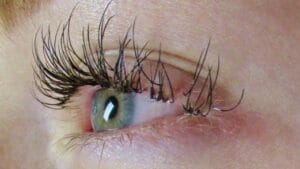 Figure 4. Eyelash extensions with erythema and blepharitis.
Figure 4. Eyelash extensions with erythema and blepharitis.
Helpful Tips for Eyelash Health
What are the best practices for eyelash extensions if patients won’t give them up. Encourage them to take a break between fills, have them review the ingredients of the lash glue and solvents, and make sure they clean their extensions. I like hypochlorous spray BID coupled with a micellar water-based cleanser.
How should you treat the patient who looks like Figure 5 (below)? What would be a great question to ask? How about, “Your eyelashes are really long. Are those natural or do you use some type of lash serum?”
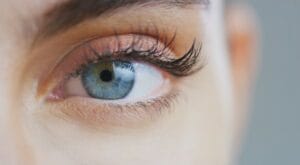
This is another easy question that can uncover a magnitude of harmful habits and a great segue into how and what to avoid for long-term ramifications to the ocular health. There is only one FDA-approved lash serum – Latisse (Allergan). Its’ active ingredient is bimatoprost 0.03%, a molecule that eye care knows well. There are multiple studies showing the effects of prostaglandin analogs (PGAs)2-MGD, periorbital fat atrophy, hyperpigmentation, dermatitis, iris color change. Do I prescribe Latisse? I do, BUT the patients sign a consent form that states they understand the risks and side effects, and I see them for serial meibography and ocular surface disease assessment every three months. This way if we see an issue, we can address it sooner rather than later.
Check Labels for Unregulated Ingredients
Lurking underneath our slit-lamps, though, are a stealthier culprit. These are the over-the-counter synthetic PGAs. These don’t have to go through the Food and Drug Administration due to their synthesis and are readily available for purchase without regulation. Make no mistake, these are just as potent and can be just as detrimental to the ocular health. The key ingredient in these is typically isopropyl closprostenate, but because it’s not regulated this will not be listed as the active ingredient. Usually, companies highlight the key ingredients as hyaluronic acid or aloe, which is vera benign to the ocular surface, but dig into the label —DO NOT believe the marketing hype! See Figure 6 for an example:
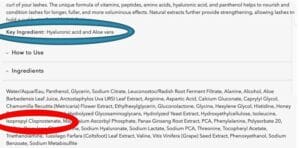 Figure 6. The key ingredient is circled in blue, but the rest of the ingredients include isopropyl cloprestanate in red.
Figure 6. The key ingredient is circled in blue, but the rest of the ingredients include isopropyl cloprestanate in red.
Elevate your patient’s eyelash health and knowledge by expanding outside your comfort zone of conversation. Implement the simple protocol of having patients look down and search for threats to your patient’s ocular health. Once they look down, you’ll never look back, and you will wonder how you ever did an exam without that single step. Now you can diagnose and treat DB, teach proper eyelash extension care and habits, and lastly educate about the dangers of hidden PGAs. These are the most common patient types you see every day. Happy hunting!
Resources:
Figure 2 TFOS Lifestyle: Impact of cosmetics on the ocular surface. Sullivan et. al
The EWG site
The Cosmetic Ingredient Review
References
1 Sarah et al. The eyelash follicle features and anomalies: A review, Journal of Optometry, Volume 11, Issue 4, 2018, Pages 211-222
2 Mocan MC, Uzunomanoglu E, Kocabeyoglu S, Karakaya J, Irkec M. The association of chronic topical prostaglandin analog use with meibomian gland dysfunction. J Glaucoma 2016 Sep;25(9): 770-4



